Search Results
Fine Jewelry University Articles matching: “18kt fl”
Showing only FJU Article results. Click here to show all results.
Fine Jewelry University (Show All FJU Articles)
-

What are “Blood Diamonds”?
Conflict diamonds are diamonds illegally traded to fund conflict in war-torn areas, particularly in central and western … 2000, the global diamond industry made clear to the international community its zero tolerance policy towards conflict diamonds. Dedicated to eradicating the trade in conflict diamonds, it worked closely with the United Nations, …to create the Kimberley Process Certification System. This system was formally adopted in 2003 and guards against conflict diamonds entering the legitimate diamond supply chain. The diamond industry also adopted a voluntary System of …
-

Gem in the Spotlight: Alexandrite
… the extremely rare, color-change variety of a gem species called Chrysoberyl. It appears bluish-green in daylight, fluorescent light, and some LED light. Under incandescent light, candle, and firelight, alexandrite appears purplish-red… very well, only transmitting green and red light. This means that depending on the light source the stone will reflect more of the accent colors of light. Since fluorescent light has a stronger greenish-blue component, the stone …
-
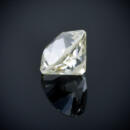
The History of Diamond Cuts
… engagement ring. Archduke Maximilian of Austria gave her a ring that was set with a point cut diamond and thin flat pieces of diamonds in the shape of an “M” in 1477. The Earliest Diamond Cuts Once it was understood that only diamond … eyes. It has anywhere from 3 to 24 facets coming to a point in the middle. But its most recognized aspect is the flat bottom. Basically, it is a crown without a pavilion. Interesting fact #2: Some diamond cuts do not have a standard …
-
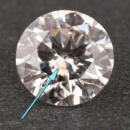
What Are Lab Grown Diamonds?
… nature made a given gem. Lab grown diamonds, on the other hand, are made in a controlled environment. They have signs of a regulated process that is not like nature. Furthermore, human efforts are not perfect and they leave their own flaws and clues that humans made a given gem. The types of inclusions and subtle variations in crystal structure are one of the main ways to differentiate between lab grown and natural diamonds. You can also learn more about how to tell …
-
Caring for and Cleaning Your Jewelry
How to Clean Jewelry A diamond’s spectacular beauty is due to its light show. Diamonds make light reflect, show its many colors, and dazzle. To perform its magic the diamond must be clean. Diamonds are grease magnets. … solutions that contain oil as they will spot and dull the stone. For hard spots you can use toothpicks and dental floss. Be careful not to scratch the metal or lift the prongs. A final wipe with a lint-free cloth will remove any dust …
-
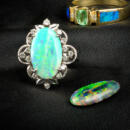
Gem in the Spotlight: Opal
…, making it susceptible to scratches and damage from sharp impacts. Household chemicals and extreme temperature fluctuations can also harm opals, so gentle care is essential. To keep opal at its luminous best, wiping it clean with a … body color, many of these stones have little to no play of color. The best stones have strong greens and blues that flash through the orange body color. Boulder Opal: Boulder opals are gem opal material that still incorporates some of …
-
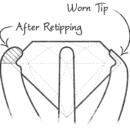
Jewelry Repair FAQ
… for an “HGE” stamped on the jewelry to indicate that it is Heavy Gold Electroplated. On the other hand, gold flashing (or washing) is thinner than standard gold plating. Gold flashing is only about 0.175 microns (or 0.000005 inches) … you can do is to gently prod the diamond or gemstone with a pen cap to see if you can detect any movement. The reflection of the facets and make this movement difficult to see, but if you think you hear a rattle, try pushing on the …
-
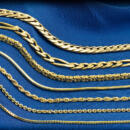
Types of Necklace Chains
…easily be worn on their own or layered with other chains. They are also a great option for pendants because they are flexible and don’t often snag the pendant bail. They are also relatively strong to support the weight of a pendant … chains make a good base for charm bracelets. PROS Wearability – The simple design of cable chains makes them very flexible and nearly impossible to kink. Serviceability – They are probably the easiest chain style to maintain and repair…
-
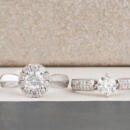
Anatomy of a Ring
… rest of the ring without using a separate part. These designs can use a combination of prongs, channels, beads, or flush setting to hold the center stone in place. The important thing to note here is that the stone must be set somehow… know, it’s a cathedral ring. Cathedrals integrate the center top of the ring with the rest of the design creating a flowing line in contrast to simple solitaire rings which leave the center stone hovering in space above the ring shank…